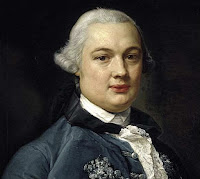James Bruce and David Livingstone
The characters above in this tale, set on the African continent, lived in two different centuries: nineteen years after James Bruce died (in 1794), David Livingstone was born (in 1813).
Below, are biographies of the two men as extracted from britannica.com:
James Bruce, (born December 14, 1730, Larbert, Stirling, Scot.—died April 27, 1794, Larbert), explorer who, in the course of daring travels in Ethiopia, reached the headstream of the Blue Nile, then thought to be the Nile’s main source. The credibility of his observations, published in Travels to Discover the Source of the Nile (1790), was questioned in Britain, partly because he had first told the French court of his discoveries. Reports by later travelers, however, confirmed the accuracy of his account.
As British consul in Algiers (1763 and afterward), Bruce studied many antiquities of North Africa, recording what he saw in fine drawings. Beginning in 1765 he traveled widely in the Mediterranean region, notably in Syria, and arrived at Alexandria in July 1768. Intent on reaching the source of the Nile River, he left Cairo on an arduous journey by way of the Nile, Aswān, the Red Sea, and Mitsiwa (now Massawa, Eritrea), eventually reaching the Ethiopian capital of Gonder on February 14, 1770.
Despite serious political unrest in Ethiopia, Bruce continued his expedition and reached Lake Tana, where the Blue Nile rises, on November 14. The journey homeward was one of extreme hardship. He arrived at Marseille in March 1773 and returned to London in 1774. Following retirement to his estate, he began writing in 1780 his vivid account of his travels, which is considered one of the epics of African adventure literature. (from Britannica.com)
David Livingstone, (born March 19, 1813, Blantyre, Lanarkshire, Scotland—died May 1, 1873, Chitambo [now in Zambia]), Scottish missionary and explorer who exercised a formative influence on Western attitudes toward Africa.
In 1834 an appeal by British and American churches for qualified medical missionaries in China made Livingstone determined to pursue that profession. To prepare himself, while continuing to work part-time in the mill, he studied Greek, theology, and medicine for two years in Glasgow. In 1838 he was accepted by the London Missionary Society. The first of the Opium Wars (1839–42) put an end to his dreams of going to China, but a meeting with Robert Moffat, the notable Scottish missionary in southern Africa, convinced him that Africa should be his sphere of service. On November 20, 1840, he was ordained as a missionary; he set sail for South Africa at the end of the year and arrived at Cape Town on March 14, 1841. (from Britannica.com)
One aspect of the Story of Africa is the versions of the narrative as presented by the outsider; and these two Scots present two contrasting narratives of their time on the continent.
The writings of and about both men are now available to download through the Project Gutenberg website.
The contrasting narratives by two people from the same country in Europe about the places in Africa they visited is also worth noting: while the first to visit the continent came across as going with the purpose of seeking knowledge, the other who followed in a later period in history was more interested in what he claimed he was bringing to his hosts.
The place of these two Scots in Africa’s history will be examined in future posts.


No comments:
Post a Comment